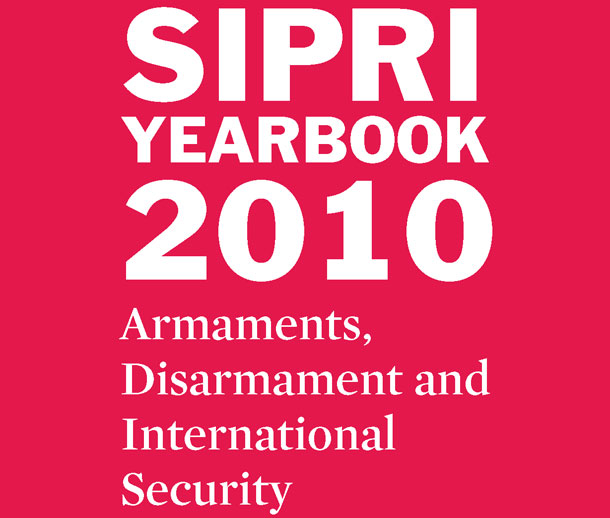- Washington “follows with interest” Morocco’s openness onto Africa (John Kerry)Posted 12 years ago
- The trial of South African Paralympic champion Oscar Pistorius opened in Pretoria on Monday.Posted 12 years ago
- USA welcomes efforts of King Mohammed VI in MaliPosted 12 years ago
- Egypt’s population reaches 94 millionPosted 12 years ago
- Mugabe celebrates his 90thPosted 12 years ago
- Moroccan Monarch to Build a Perinatal Clinic in BamakoPosted 12 years ago
- King Mohammed VI handed a donation of bovine semen for the benefit of Malian breeders.Posted 12 years ago
- Moroccan King’s strategic tour to Africa: Strengthening the will of pan African Solidarity and stimulating the south-south cooperation mechanisms over the continentPosted 13 years ago
- Senior al-Qaida leader killed in AlgeriaPosted 13 years ago
- Libya: The trial of former Prime Minister al-Baghdadi AliPosted 13 years ago
SIPRI REPORT 2010: Arms race concerns in Africa
 The new SIPRI report on armament published Monday the 15 March, reveals that African states accounted for 7 per cent of international imports of major conventional weapons over the period 2005–2009, compared with 6 per cent for 2000–2004. During the period 2005–2009, Algeria and South Africa were the two largest arms importers in Africa, accounting for 43 per cent and 28 per cent, respectively, of the region’s imports. The third largest, recipient of major conventional weapons was Sudan, which accounted for 5 per cent of Africa’s imports. In several cases relatively small volumes of arms supplies to sub-Saharan African countries have had a major impact on regional conflict dynamics.
The new SIPRI report on armament published Monday the 15 March, reveals that African states accounted for 7 per cent of international imports of major conventional weapons over the period 2005–2009, compared with 6 per cent for 2000–2004. During the period 2005–2009, Algeria and South Africa were the two largest arms importers in Africa, accounting for 43 per cent and 28 per cent, respectively, of the region’s imports. The third largest, recipient of major conventional weapons was Sudan, which accounted for 5 per cent of Africa’s imports. In several cases relatively small volumes of arms supplies to sub-Saharan African countries have had a major impact on regional conflict dynamics.
* Deliveries to Algeria in 2009 included the last of the 28 Su-30MK combat aircraft ordered from Russia in 2006. Two Type-636E/Kilo submarines and 4 S-300PMU-2/SA-20B and 38 96K9 Pantsyr-S1 air defence systems are also on order from Russia. Algeria’s neighbours Libya and Morocco received much smaller volumes of arms during this period. However, Morocco is slated for major arms imports having ordered 24 F-16C combat aircraft from the USA, 1 FREMM frigate from France and 3 smaller SIGMA frigates from the Netherlands in 2008. Libya continues to discuss the procurement of combat aircraft, tanks and small warships with several potential suppliers.
* Worryingly, arms continue to flow to unstable parts of Africa. During 2005–2009, Sudan received armoured vehicles and military aircraft from Russia, China and Belarus. Ukraine continued deliveries of Su-25 combat aircraft to Chad in 2009 and completed the delivery of 110 T-72M tanks to Kenya, although rumours continue to circulate alleging that the Government of Southern Sudan remains the intended end-user. Kenya is also in the process of receiving 15 F-5E combat aircraft from Jordan and 4 Z-9WA combat helicopters from China.
* International concerns relating to the flow of major conventional weapons and small arms and light weapons (SALW) to areas of conflict in Africa are reflected by the fact that 7 of the 12 United Nations arms embargoes in force during 2009 had African targets. In December 2009 a UN arms embargo was imposed on Eritrea. However, the enforcement of these embargoes remains problematic. In 2009 the UN arms embargoes on entities in Côte d’Ivoire, the Darfur region of Sudan, the Democratic Republic of the Congo and Somalia were seriously violated.
